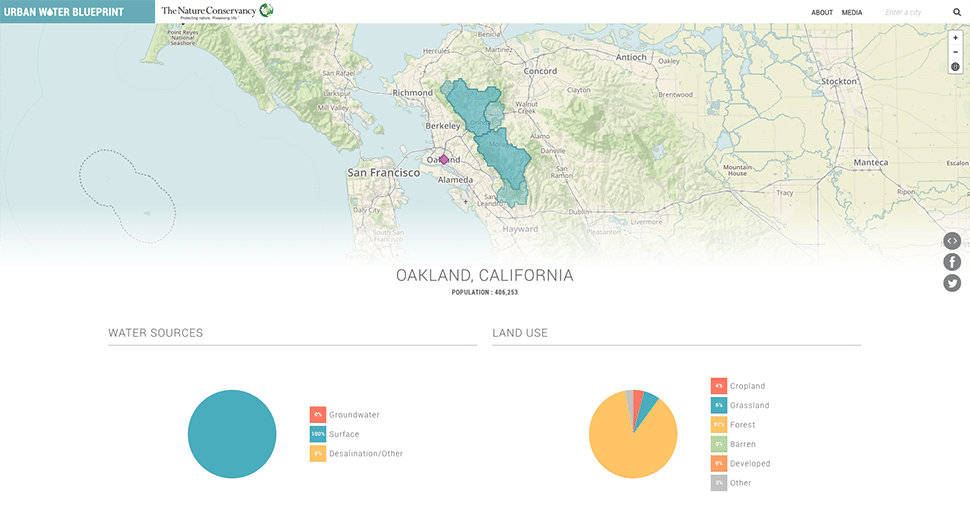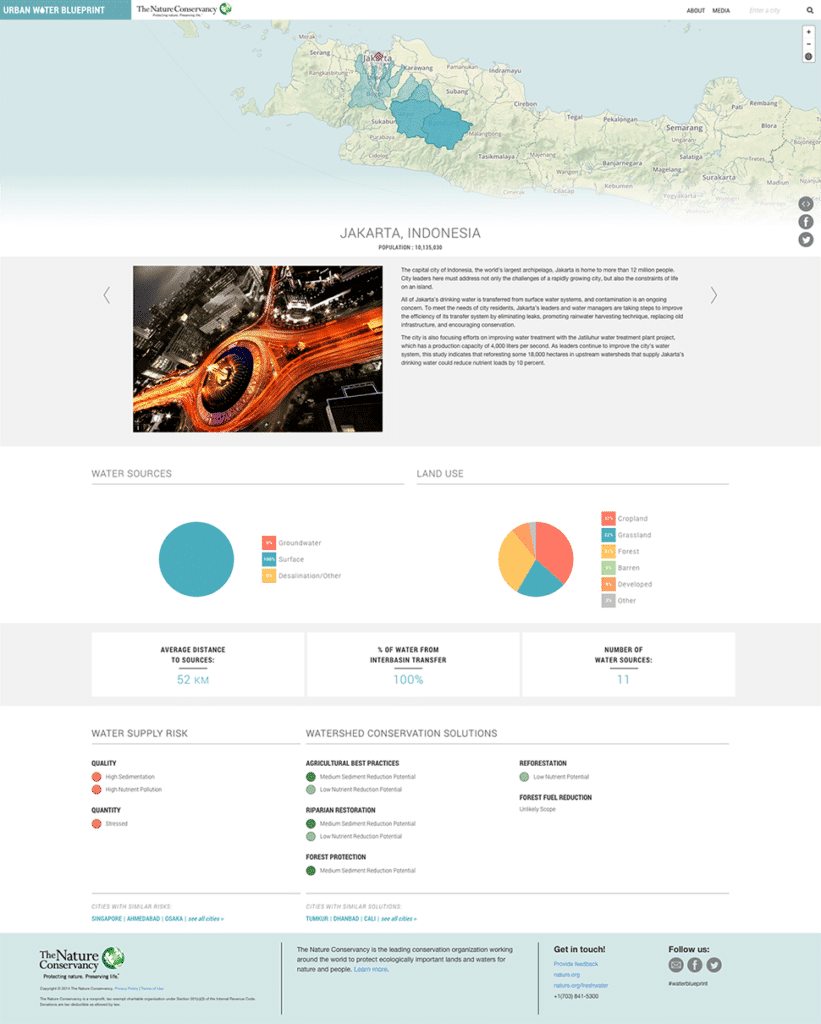Urban Water Blueprint for The Nature Conservancy
Mapping water conservation strategies worldwide


Background
Healthy cities need reliable clean water to thrive. But how do we achieve that critical goal of safe, secure water supplies for hundreds of cities all over the world? The Nature Conservancy, working with the C40 Cities Climate Leadership Group and the International Water Association, has the answer: Conservation strategies could benefit more than 700 million people in the world’s 100 largest cities—one out of 10 people on the planet. A rich, new dataset created by Nature Conservancy scientists illustrates this opportunity for more than 500 cities worldwide. They asked Stamen to help find a way to make their data approachable, engaging and navigable for city managers, mayors, water managers, and residents in cities around the world.
What we made
The dataset breaks down the water data metrics by quality and quantity. It also covers the nature-based solutions cities could use to make their water systems safer and more secure, including best practices for agriculture, riparian restoration, forest protection, reforestation, and forest fuel reduction. In many cases, solutions are very manageable, making cities’ water systems safer and more secure while also benefitting wildlife and ecosystems.
The data itself covers 25 different variables for 535 cities, and those cities contain 1,840 “diversions”—watersheds, desalination plants, groundwater withdrawal points—and each of those has nine or 10 data points. The goal, of course, wasn’t to drown people in all that data, but rather to reveal the most interesting and relevant information at the right time. The team at the Nature Conservancy selected 25 cities to highlight with narratives and images that highlight the story they wanted to tell—that conservation works for people and nature—and our map and page designs showcased that message.
Once you find yourself on a city page, in Jakarta, for example, you can take in the whole sweep of that city’s water situation with a few simple charts and color-coded ratings. At a glance, you see that much of Jakarta’s water comes from afar, and that its overall water supply is very stressed. You might also easily see how neighboring cities – like Oakland and San Francisco, sometimes have very different water supplies and, consequently, water challenges. In particular, San Francisco’s water quantity is stressed while Oakland’s is not.
The Urban Water Blueprint is also designed to explore and share, so that people around the world can understand and talk about the water challenges faced by their cities. Most importantly, like TNC, we hope to see city leaders take action to protect water for people and nature.Less doom and gloom, fewer dollars spent! There’s no reason not to conserve.Get the Urban Water Blueprint for your city.
